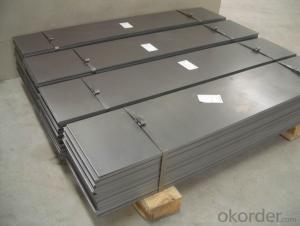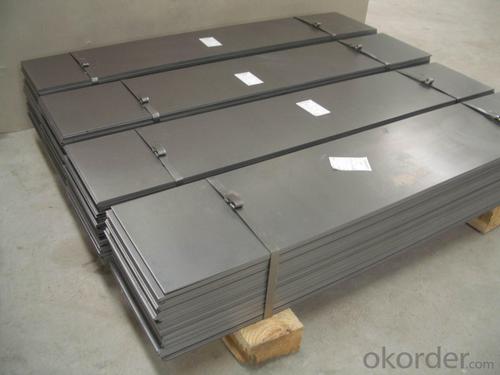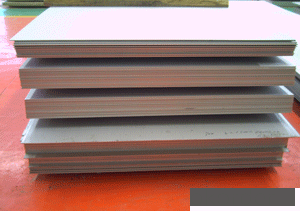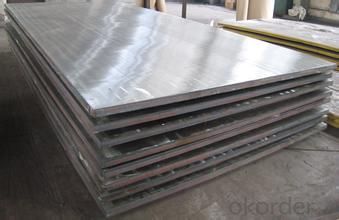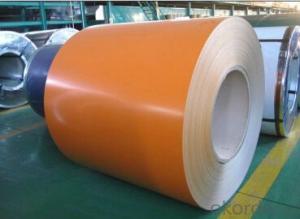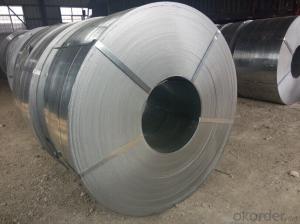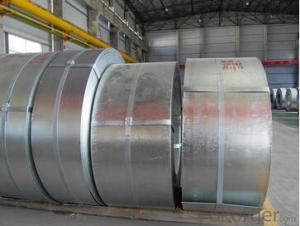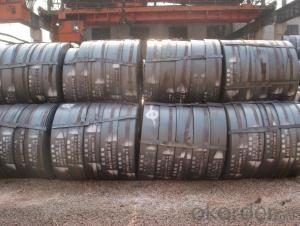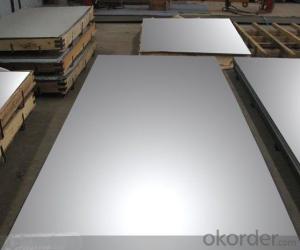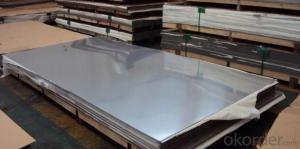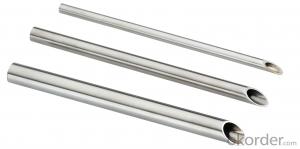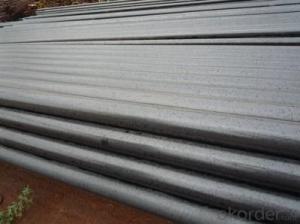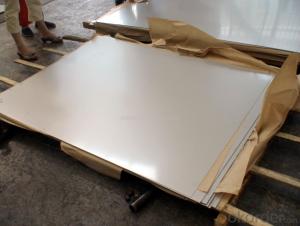Stainless Steel Plate ASTM Standard 200,300,400 Series
- Loading Port:
- China main port
- Payment Terms:
- TT or LC
- Min Order Qty:
- 50 m.t.
- Supply Capability:
- 1000 m.t./month
OKorder Service Pledge
OKorder Financial Service
You Might Also Like
1.Structure of Stainless Steel Plate Description
Be used in manufacture of medical equipment, auto parts, heat-resistant kitchen utensils, electrical accessories , construction decoration ,etc.The surface brightness and flatness of no2B is better than no2D. then through a special
surface treatment to improve its mechanical properties,No2B could nearly satisfy comprehensive uses.
2.Main Features of the Stainless Steel Plate
• Decoration
• Daily Necessities
•,Medical Treatment
• Daily Necessities
3. Stainless Steel Plate Images
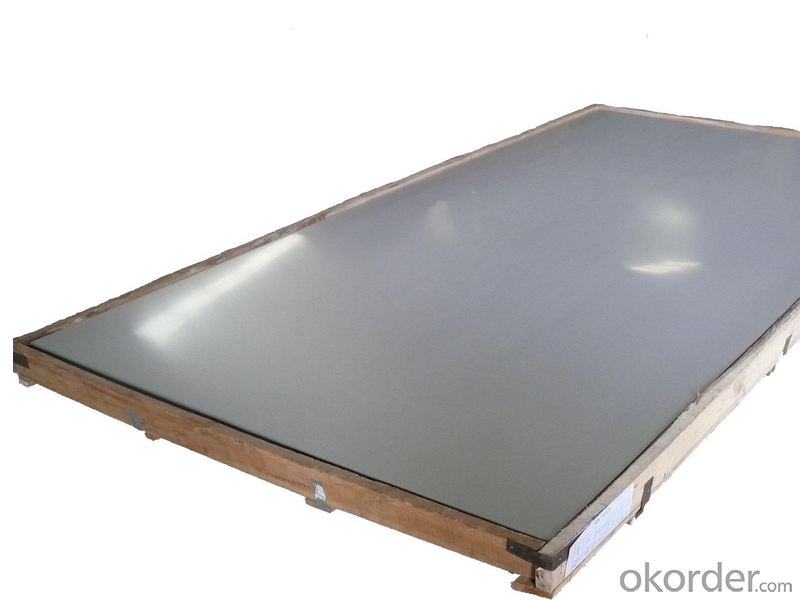
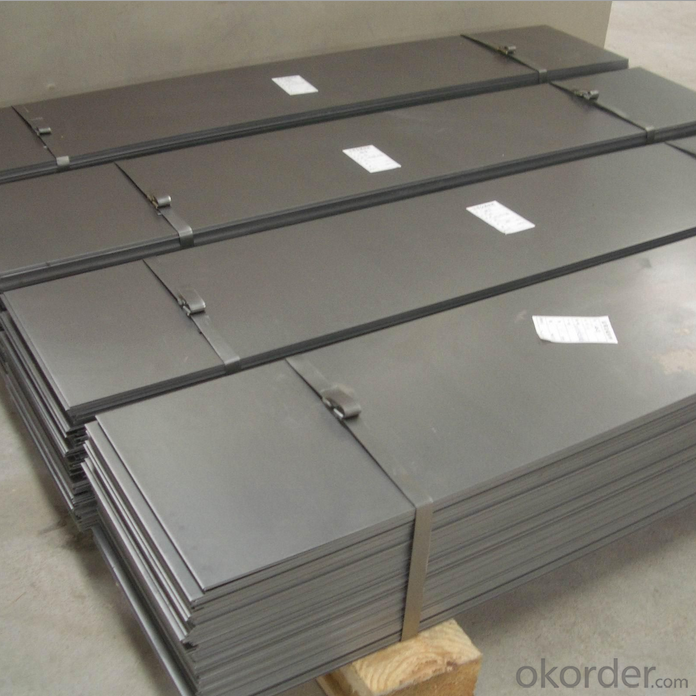
4. Stainless Steel Plate Specification
Product Name | ASTM Standard 200,300,400 Series Stainless Steel Plate |
Standard | JIS AISI ASTM GB DIN |
Grade | 200/300/400 Series |
Thickness | 0.2mm-100mm |
Width | 100mm-2000mm |
Length | According to clients’ requirement |
Surface Finish | 2B ,BA ,8K ,NO4,NO2, NO1 ,Hair line ,EMBOSSED... |
Technique | Cold rolled ,Hot rolled |
Package | Seaworthy packing or as the consumers’ demand |
Application | Be used in manufacture of medical equipment, auto parts, heat-resistant kitchen utensils, electrical accessories , construction decoration ,etc |
5.FAQ of Stainless Steel Plate
①Who are you?
We are the manufacturer! We produce stainless steel products
with high quality & very competitive price!Please feel free to
contact us for more information!
②How long can we receive the product after purchase?
In the purchase of product within three working days, We will arrange the factory delivery as soon as possible. The pecific time of receiving is related to the state and position of customers.Commonly 7 to 10 working days can be served.
③How about your company?
A world class manufacturer & supplier of castings forging in Stainless Steel Sheet,is one of the large-scale professional investment casting production bases in China,consisting of both casting foundry forging and machining factory. Annually more than 8000 tons Precision casting and forging parts are exported to markets in Europe,America and Japan. OEM casting and forging service available according to customer’s requirements.
- Q: Can steel strips be used for making springs or clips?
- Yes, steel strips can be used for making springs or clips. Steel strips are often chosen for their strength, durability, and flexibility, making them suitable for applications that require springs or clips with tension or fastening capabilities.
- Q: How are steel strips used in the construction of bridges?
- Steel strips are commonly used in the construction of bridges for various purposes, such as reinforcing concrete, providing structural support, and connecting different components of the bridge. They are often used as reinforcement in concrete beams and columns to increase their strength and durability, ensuring that the bridge can withstand heavy loads and forces. Steel strips are also used to connect and secure different parts of the bridge, such as the bridge deck and girders, helping to create a stable and robust structure.
- Q: What are the different methods of heat treatment for steel strips?
- Steel strips can undergo various heat treatment methods, each serving distinct purposes and yielding different outcomes. Some commonly employed techniques include: 1. Annealing, which entails heating the steel strips to a designated temperature and maintaining it for a specific duration, followed by controlled cooling. This relieves internal stresses, enhances machinability, and improves the overall ductility of the steel. 2. Quenching, a rapid cooling process that involves immersing the steel strips in a quenching medium, like oil or water, to achieve heightened hardness and strength. This method is frequently employed to harden the steel, rendering it suitable for wear-resistant applications. 3. Tempering, performed subsequent to quenching, involves reheating the steel strips to a specific temperature and then gradually cooling them. This process diminishes brittleness and enhances toughness while maintaining an optimal balance of hardness and strength. 4. Normalizing, akin to annealing, but employing still air for the cooling process instead of controlled cooling. This method is utilized to refine the grain structure of the steel, improve its mechanical properties, and enhance its machinability. 5. Case hardening, a surface hardening technique that involves introducing a high-carbon layer to the steel strips. This is accomplished by heating the steel in the presence of a carbon-rich substance, followed by quenching and tempering. Case hardening establishes a hard outer layer that withstands wear, while preserving a tough and ductile core. 6. Induction hardening, a localized heat treatment method that focuses on specific areas of the steel strips using high-frequency induction heating. This induces rapid quenching in the targeted regions, resulting in heightened hardness and wear resistance. 7. Stress relieving, a heat treatment process that encompasses heating the steel strips to a specific temperature and maintaining it for a period of time, followed by slow cooling. This technique alleviates residual stresses in the steel, improving dimensional stability and preventing distortion or cracking during subsequent machining or use. These represent merely a selection of the diverse heat treatment methods available for steel strips. The choice of technique depends on the desired properties and characteristics required for the specific application of the steel.
- Q: How are steel strips used in the production of automotive body panels?
- Steel strips are used in the production of automotive body panels by being shaped, formed, and welded together to create the desired shapes and structures of the panels. These strips provide strength, durability, and rigidity to the body panels, ensuring the safety and protection of the vehicle's occupants.
- Q: Can steel strips be used in the manufacturing of hand tools?
- Yes, steel strips can be used in the manufacturing of hand tools. Steel is a commonly used material in the manufacturing industry due to its strength, durability, and resistance to wear and tear. Steel strips can be cut and shaped into various components of hand tools such as blades, handles, and sockets. Additionally, steel can be heat-treated to enhance its hardness and strength, making it ideal for tools that require sharp cutting edges or heavy-duty usage. Overall, steel strips are a versatile and reliable material that can be effectively utilized in the manufacturing of hand tools.
- Q: How are steel strips used in the production of metal enclosures?
- Steel strips are an essential component in the production of metal enclosures due to their versatility and strength. These strips are typically made from a high-quality steel alloy, such as stainless steel or galvanized steel, which provides excellent durability and resistance to corrosion. In the manufacturing process, steel strips are first cut into specific lengths and widths, depending on the dimensions of the metal enclosure being produced. These strips are then shaped and formed into the desired shape using various techniques, such as bending, folding, or welding. The steel strips serve as the main structural component of the metal enclosure, providing stability and rigidity to the overall structure. They are often used to create the frame or skeleton of the enclosure, acting as support for other components and ensuring that the enclosure maintains its shape and integrity. Moreover, steel strips are also used to create panels or walls of the enclosure. These panels are usually attached to the frame using welding or fastening methods, creating a solid and secure structure. The steel strips can be perforated or have holes to allow for ventilation or cable management, depending on the specific requirements of the enclosure. Additionally, steel strips can be coated or painted to enhance their appearance and provide additional protection against rust or other environmental factors. This allows the metal enclosures to be used in various industries, including electronics, telecommunications, and automotive, where aesthetics and durability are crucial. Overall, steel strips play a vital role in the production of metal enclosures by providing strength, stability, and versatility. They are an integral part of the manufacturing process, ensuring that the final product meets the required standards and provides a reliable and durable solution for housing various equipment and components.
- Q: How are steel strips shaped and formed?
- Steel strips are shaped and formed through a process called rolling. This involves passing large steel billets or slabs through a series of rolling mills, which apply pressure and force to shape the metal into thin, flat strips. The rolling mills consist of a set of rollers that progressively reduce the thickness of the steel strip as it passes through each stage. The process begins with heating the steel billet to a high temperature to make it more malleable. The hot billet is then fed into the first rolling mill, where it is passed through a series of rollers that gradually decrease the thickness of the steel strip. The strip is then cooled and moved to the next rolling mill, where the process is repeated. Each rolling mill has a specific roll configuration designed to impart the desired shape and dimensions to the steel strip. This can include flat rolls, which compress the strip to reduce thickness evenly, or shaped rolls, which create specific cross-sectional profiles such as round, square, or rectangular shapes. Once the desired shape is achieved, the steel strip may undergo further processing such as annealing or tempering to enhance its mechanical properties. These processes involve heating and cooling the strip to alter its microstructure and improve its strength, ductility, and hardness. In addition to rolling, steel strips can also be formed through other techniques such as cold forming or stamping. Cold forming involves shaping the steel strip at room temperature using dies or molds. This process is commonly used to create complex shapes and precise dimensions. Stamping, on the other hand, involves cutting or shaping the steel strip using a press with a die that is specifically designed for the desired shape. Overall, the shaping and forming of steel strips involve a combination of heating, rolling, and other forming techniques to achieve the desired shape, dimensions, and mechanical properties. These processes are critical in the manufacturing of various steel products, such as automotive parts, construction materials, and household appliances.
- Q: How do steel strips perform in terms of impact resistance?
- Steel strips generally have high impact resistance due to their strong and rigid nature. They are able to withstand significant force and are less likely to deform or break upon impact. This makes them ideal for applications where impact resistance is crucial, such as in construction, automotive, and aerospace industries.
- Q: How are steel strips processed for specific applications?
- Steel strips are processed for specific applications through a series of manufacturing steps such as hot rolling, cold rolling, annealing, and coating. These processes help in shaping the steel strips, improving their mechanical properties, and enhancing their corrosion resistance.
- Q: Are steel strips heat treatable?
- Yes, steel strips are heat treatable.
Send your message to us
Stainless Steel Plate ASTM Standard 200,300,400 Series
- Loading Port:
- China main port
- Payment Terms:
- TT or LC
- Min Order Qty:
- 50 m.t.
- Supply Capability:
- 1000 m.t./month
OKorder Service Pledge
OKorder Financial Service
Similar products
Hot products
Hot Searches
Related keywords
